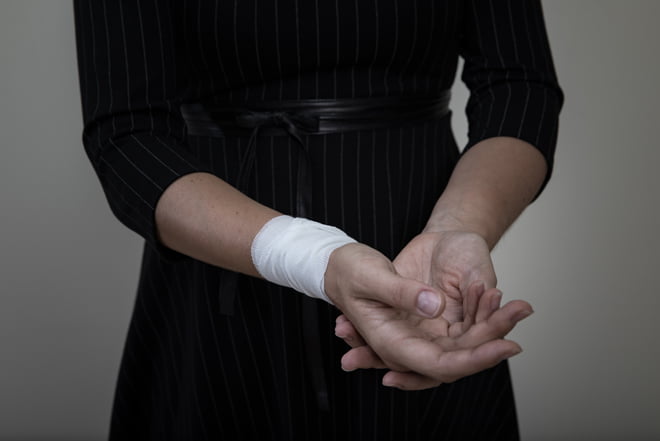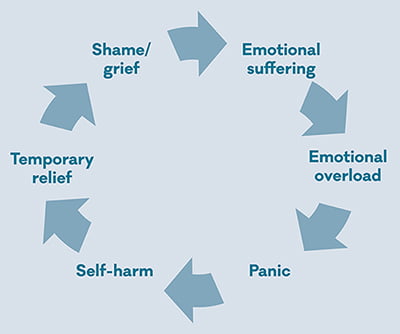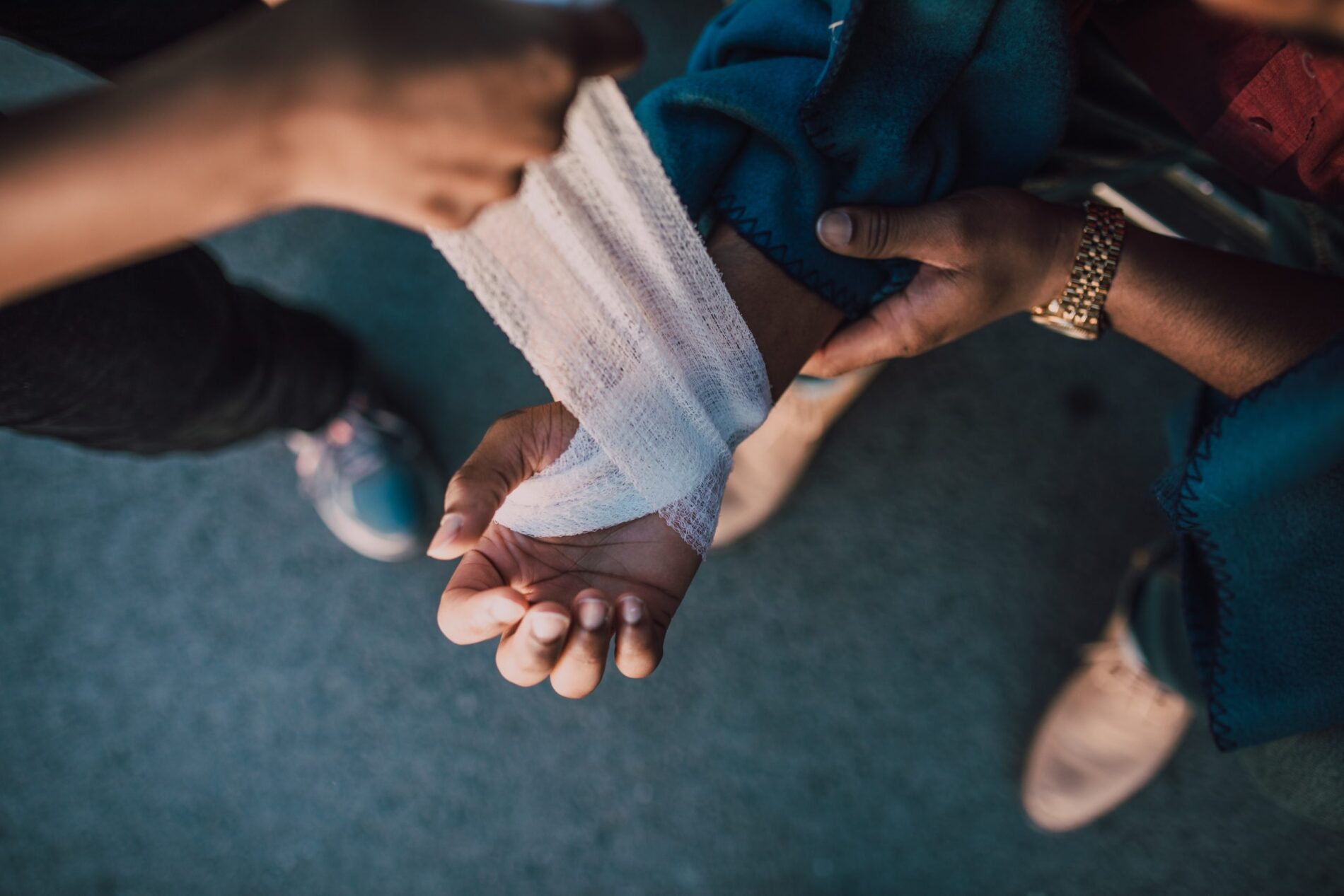Suffering from self-harm is a struggle that many people all over the world face. It can be difficult to understand self-harmed individuals and their motives for self-harm, especially when it’s a topic that has stigma and taboo. Thankfully, there are many different resources available to help those struggling with self-harm cope and heal themselves in healthy ways. In this article, we will discuss what self-harm is, why people self-harm, how you can help someone who self harms, and more!
Contents
What Is Self-Harm?
Self-harm is self-injury. It consists of any form of self-inflicted damage to the body, whether that be with a sharp object or not. self-harm is self-abuse. It usually does not have suicidal intent, although it can lead to suicide in some cases.
When people think about self-harm they often think of self-harming as cutting or burning themselves with cigarettes, but there are many different ways that an individual may self injure themself. the most common forms are scratching and carving words into your skin because these two methods do not require any tools or materials other than yourself!
You should be aware that if you choose to use something sharp then this could end up causing more damage, which means longer healing time for you and possibly permanent scarring.
You also might see self-inflicted bruises on individuals who self-injure, especially around their wrists. self-inflicted bruises are a very common self-injury practice and they can be difficult to heal because you can’t stop hitting your arm, wrist, or other parts of the body with yourself!
Causes of Self-Harm

People self injure for many reasons but most commonly it is from emotional distress. There may have been a time in their life where they felt unable to control their emotions and so decided self-harm was the only way out! If someone feels like they cannot cope emotionally then self-harming will make them feel better – even though at first sight it looks like exactly what you should not be doing! self-harming is the release of negative emotions without any visible injury.
There are also times where self-harm can stem from other mental illnesses such as anxiety, depression, or eating disorders. If you have a mental illness then self-harming may be your only relief because it will temporarily distract you from what is happening in your mind and allow you to feel something else for that moment.
Symptoms
Self-injury symptoms might include the following:
- Scars, often in patterns
- Fresh cuts, scratches, bruises, bite marks, or other wounds
- Excessive rubbing of an area to create a burn
- Keeping sharp objects on hand
- Wearing long sleeves or long pants, even in hot weather
- Frequent reports of accidental injury
- Difficulties in interpersonal relationships
- Behavioral and emotional instability, impulsivity, and unpredictability
- Statements of helplessness, hopelessness, or worthlessness
Forms of Self-Injury
Most self-injuries are done in solitude and a methodical or ritualistic manner, resulting in a pattern on the skin. Self-harm includes the following behaviors:
- A cutting (cuts or severe scratches with a sharp object)
- Scratching
- Burning (with lit matches, cigarettes, or heated, sharp objects such as knives)
- Carving words or symbols on the skin
- Self-hitting, punching, or head banging
- Piercing the skin with sharp objects
- Inserting objects under the skin
Self-injury is most frequent on the arms, legs, and torso front, although it may affect any part of the body. Self-injurers can inflict damage to themselves in a variety of ways.
Self-injury can be a form of escapism. Getting angry activates the desire to self-harm. Many individuals only self-harm on rare occasions and then stop. Self-injury, on the other hand, may become a chronic behavior for some persons.
The Self-Harm Cycle

Self-harm is frequently to relieve the pressure caused by distressing ideas and emotions. This might provide momentary comfort from the emotional distress the individual is experiencing. It’s critical to recognize that this alleviation is only short-term since the underlying causes are still present. Soon after, guilt and embarrassment may set in, continuing the cycle.
Because there may be some brief comfort at first, self-harm can become a person’s regular approach to life’s problems. This implies that speaking with someone as soon as possible to obtain the best support and assistance is critical. Learning new coping methods to cope with these issues might help you break the cycle of self-harm in the long run.
More on Why People Self-Harm
The most typical time for self-harm is during adolescence and young adulthood, although it can happen at any age. People who have suffered trauma, neglect, or abuse are at the greatest risk. For example, if a person grew up in an unstable family, it might become a coping mechanism. Self-injury is more likely if someone binge drinks or uses illegal drugs because they reduce self-control.
The urge to harm oneself might begin with uncontrollable fury, helplessness, or agony. When a person is unsure how to express their feelings or has been taught as a youngster to conceal them, self-harm may appear like a way out.
Sometimes injuring oneself releases endorphins or pain-killing hormones in the body, which lifts one’s spirits. Alternatively, if a person doesn’t experience many emotions, they may inflict damage on themselves to feel something “real” instead of emotional numbing.
It is a coping mechanism for stress. Some people self-harm because they are in depression or low on self-esteem and this gives them temporary relief from the pain of their depression.
Some people self-harm as an attempt at suicide but do not want to go through with it fully so they cut themselves instead so that if things get too much again then they know how to inflict more serious injury next time.
When To Seek Help For Self-Harm

In most cases, self-harm is a sign of serious emotional distress and needs to be addressed.
If you are self-harming, please see your doctor. If self-harm continues for an extended time seek professional help from a therapist or psychiatrist as soon as possible.
Self-harm can also be by medications that impact the brain in various ways. So it’s important to monitor doses closely when taking new drugs or making changes in medication routine.
Treatment And Coping
There are several effective therapies for self-harm that can help a patient regain control. Any treatment strategy must include psychotherapy. Because it may be used to manage feelings, a sufferer will need to acquire different coping skills.
The first step in obtaining assistance is to speak with a trusted adult, family member, or medical practitioner who is knowledgeable about the issue, ideally a psychiatrist. A psychiatric evaluation will entail questions regarding one’s health, history of life, and any dangerous behaviors in the past and present.
The doctor may need an hour or more to complete the evaluation. Blood tests and physical exams can’t be used to detect mental illness; hence, obtaining thorough information from the individual is essential. Doctors will be better equipped to treat them if they have as much information as possible.
Depending on any underlying illness, a doctor may prescribe medication to help with difficult emotions. For someone with depression, for instance, an antidepressant may lessen harmful urges.
If self-injury has become a habit, a doctor will also suggest therapy to assist individuals to acquire new behavior skills. Depending on the diagnosis, several various types of therapy might be utilized.
- Psychodynamic therapy This technique focuses on examining past events and feelings.
- Cognitive-behavioral therapy This course focuses on identifying negative thought patterns and enhancing coping abilities.
- Dialectical behavioral therapy It’s possible that these books will assist someone learns healthy coping methods.
If the severity or frequency of your symptoms gets to be too much, your doctor may suggest that you spend a day or two in a mental hospital. A hospital is a secure location where you can solely concentrate on therapy.
What To Do When Someone Self-Harms

You could be suffering from headaches, short-term memory loss, anxiety, or other stress-related symptoms. You may have observed a friend or family member who has frequent bruises or bandages on their body. If someone is wearing long sleeves and pants even in the summertime, they might be attempting to conceal injuries or scars.
Keep in mind that this is only one aspect of a much wider problem, and it may be accompanied by additional indicators of emotional suffering. They may make statements that sound hopeless or worthless, have poor impulse control, or have issues interacting with others.
If you’re concerned about a family member or friend harming themselves, ask them how they’re doing and be ready to listen to their response, even if it makes you uncomfortable. This may be a tough topic to grasp. One of the finest things you can do is promise them that while you don’t completely understand, you’ll be there to assist them. Don’t try to play down your emotions or make it into a joke.
Tell someone you care about that self-harm isn’t unusual, and that doctors and therapists can help. If feasible, offer to assist in the search for treatment. However, don’t go on the offensive or ask for a commitment to quit; it takes more than willpower to give up.
Breaking Down The Myths
There are several misconceptions associated with self-harm. This isn’t uncommon; myths and misunderstandings often arise when an issue like self-injury is inadequately addressed. Negative preconceptions can be harmful.
They must be debunked since they prevent individuals from discussing their problems and asking for assistance. These beliefs also lead to misinterpretation on the part of professionals, families, and friends.
MYTH: Self-harm is attention-seeking
The idea that self-harm is about “attention-seeking” is one of the most prevalent misconceptions. This isn’t the case. Many people who self-harm don’t communicate with anybody about their difficulties for a long time, making it difficult for others to muster the courage to seek assistance.
MYTH: Self-harm is a goth thing
Self-injury has been misinterpreted as being a component of youth subcultures such as “goth” or “emo.” While there is some evidence suggesting a link, no definitive proof exists that self-harm is an inherent part of any specific young person subculture, and very little evidence to support the idea that it is.
MYTH: Only girls self-harm
Although it is commonly assumed that girls are more likely to self-harm than boys, there is no evidence to support this. Boys and girls may use different self-harming techniques or have distinct motives for harming themselves, but this does not make it any less damaging.
MYTH: People who self-harm must enjoy it
Some people think that self-harm is enjoyable for the individuals who engage in it. There’s no proof that people who self-harm feel pain any differently than anybody else. The act is often extremely painful.
Some people claim that being sad has rendered them numb, and they want to feel anything just to remind themselves they are alive, even if it hurts. Others have characterized this pain as deserved punishment.
MYTH: People who self-harm are suicidal
It is misunderstood by those who don’t understand it. For many individuals, self-harming is about attempting to cope with difficult emotions and circumstances. It has a means of staying alive and overcoming these issues. Some people who self-harm, on the other hand, can feel suicidal and attempt suicide, which is why it must always be treated seriously.
Conclusion
Self-harm is a serious issue that many people struggle with. The best thing you can do for yourself if you are struggling with, or know someone who does, is to get help. If the self-harming behavior has escalated into cutting or harming other parts of your body then you must seek treatment right away before more damage occurs. You should also tell friends and family members about what’s going on so they will be able to support you when needed. It’s important not to keep this problem secret because there are ways out! There are sources available online through chat rooms, forums, etc., but don’t forget there are professionals who you can talk to for situations like this.
If you are looking for affordable Online Counseling MantraCare can help: Book a trial therapy session


